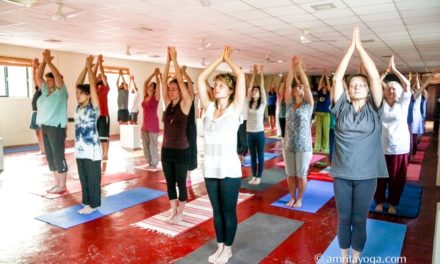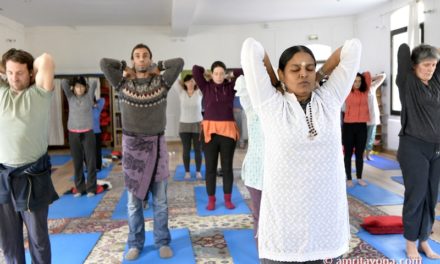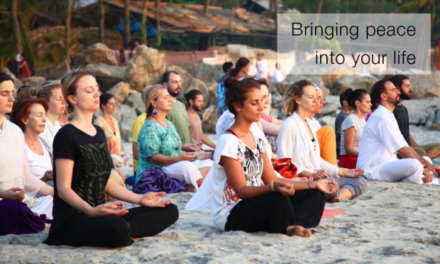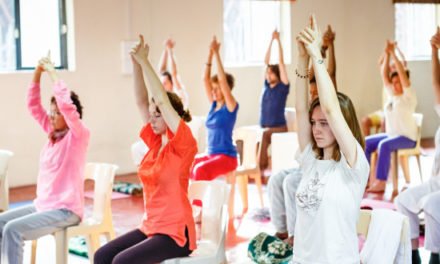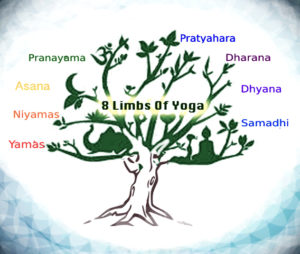 Maharishi Patanjali’s Classical Yoga text refers to the “Eight-Limbed Path” of yoga practice. Like a tree with different branches that extend from the same trunk, the eight limbs are different forms of practice but lead to the same goal of reunification with consciousness. The consciousness with which we seek is our own true nature as embodied spirit.
Maharishi Patanjali’s Classical Yoga text refers to the “Eight-Limbed Path” of yoga practice. Like a tree with different branches that extend from the same trunk, the eight limbs are different forms of practice but lead to the same goal of reunification with consciousness. The consciousness with which we seek is our own true nature as embodied spirit.
Although the imagery of branches on a tree implies a sequential approach, in practice the limbs can work simultaneously to draw us closer to our essential nature.
The limbs are:
Yama – Ethical disciplines
Niyama – Self-observation
Asana – Posture
Pranayama – Participation with life energy through breath
Pratyahara – Withdrawal of the senses
Dharana – Concentration
Dhyana – Meditation
Samadhi – Identification with Supreme Consciousness
Yama
The yama-s are universal, ethical disciplines referring to qualities that are supportive of yoga practice and also that yoga practice cultivates. These include non-violence, truthfulness, non-stealing, self-restraint, and non-hoarding. A spontaneous practice of non-violence to every sentient being is indicative of an understanding that we are all connected. What we do to another we are doing to ourselves, as we are all forms of the One.
Niyama
Niyama-s are individual disciplines which include purity, contentment, dedication, self-study, and devotion. These qualities can be cultivated or revealed within the practitioner and can be considered as disciplines which reveal our true nature. Sustained effort and devotion is necessary since our unconscious habits and orientation will otherwise remain unseen.
Asana
The asana practice promotes physical strength, flexibility, health, and a stable nervous system. Asana also promotes an ability to sit for periods of time without discomfort, which is a necessary prerequisite to meditation. Maharishi Patanjali, in his Yoga Sutras, only refers to asana as a posture for meditation and probably never foresaw the present emphasis on physical ability and fashion. Each of us is a little different in physicality, bone structure, and affinity for aspects of yoga practice. Many of us are unable to sit in meditation, as the body’s energies are scattered, and one-pointed concentration is difficult at first. Hence mindful asana practice creates a physical and energetic body capable of introversion, as performing postures is an exercise of moving prana consciously.
Without this awareness, yoga practice would not be able to cure the body of that restlessness which is a sign of its inability to contain without working them off in action and movement of the vital forces poured into it from the universal Life-Ocean.
Pranayama
Pranayama is not simply breath control. Prana, or the essential life-force, is responsible for all functions of the body—heart, organs, brain, and breathing. The breath is our most obvious link to prana, and the one that we can influence the most. Practicing pranayama brings us another step closer to refining our internal awareness of the movement of prana. The practice of becoming more sensitive is not to be approached with an attitude of domination, control, or athleticism, but an opportunity to set aside the ego and be a witness.
Pratyahara
When the body becomes more readily still and the movement of prana is noticeable, the practice of sense withdrawal becomes possible. This stage of practice is similar to the ripples on a lake becoming stilled. External objects, be they desires created by the mind or anything else, are seen clearly as only temporary. When we no longer cling to these objects and non-attachment becomes possible, our true nature turns inward.
Dharana
Dharana is a state of refined concentration and the movement of prana is stable. This state is a precursor to meditation.
Dhyana
This is the deep state of meditation where the Yogi is wholly immersed, and senses are stilled. The lake of individual consciousness is so still it reflects clearly the ultimate reality, that all is One.
Samadhi
Classical Yoga Texts state that individual consciousness and Universal Consciousness merge. There are different stages of Samadhi. The bliss experienced here is said to be millions of times that of the experience of the ordinary, separate mind. Bliss in this context is outside of normal experience and beyond all words.
Author: Brahmacharini Shobhana

